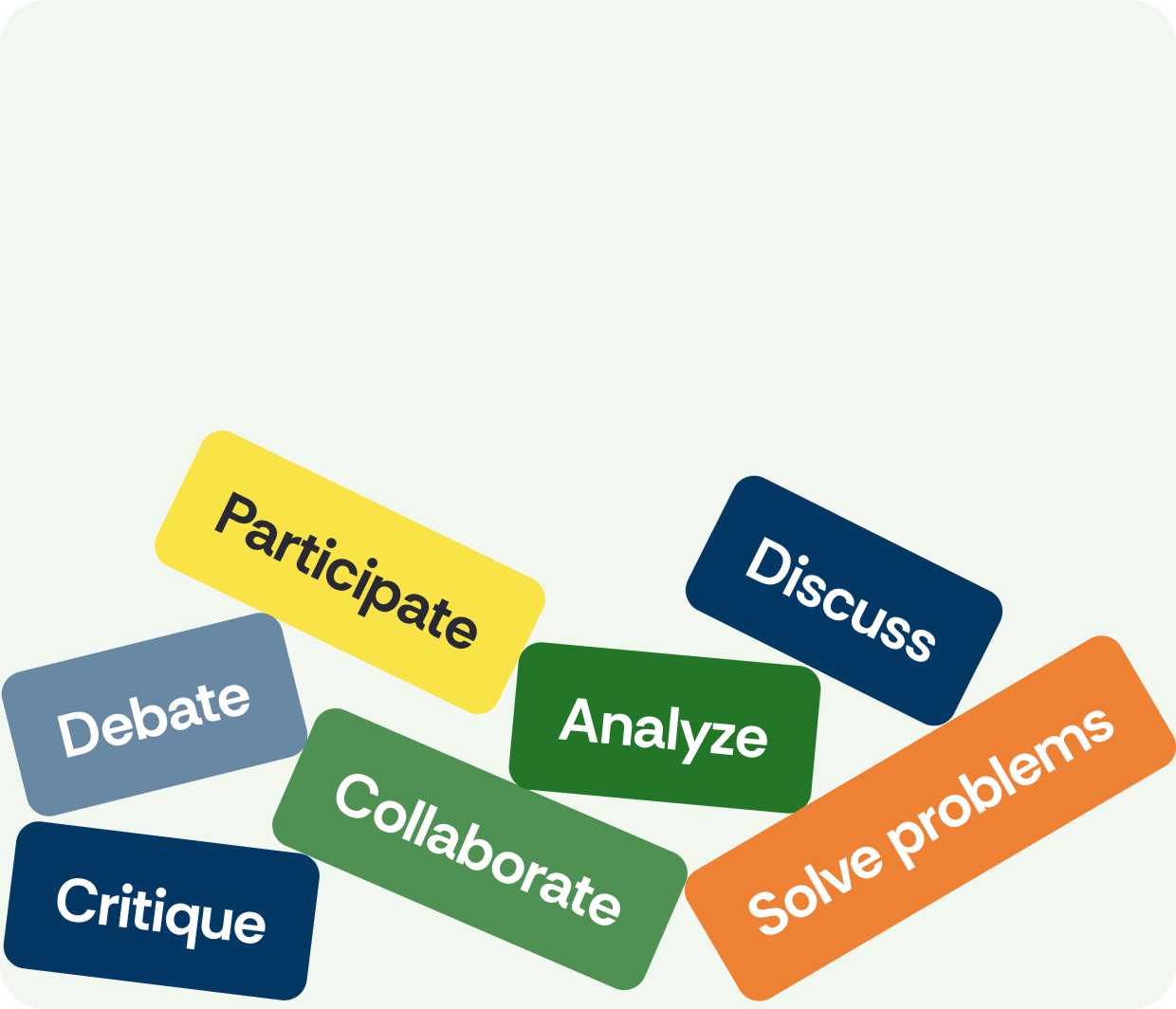Constructivist Pedagogy supported by FeedbackFruits
Help learners become active participants who build knowledge by discovering, transforming, and integrating information rather than passively consuming it.

What is constructivist pedagogy?
Constructivism is an approach to teaching and learning based on the idea that cognition, or learning, is the result of active mental construction. Rather than simply absorbing information, students make sense of new ideas by connecting them to their existing knowledge and experiences. This process of building on prior understanding allows learners to develop deeper insights, reshape misconceptions, and create more meaningful knowledge structures. In practice, constructivist learning emphasizes exploration, problem-solving, and reflection, encouraging students to take an active role in making meaning rather than relying solely on direct instruction.

Why constructivist pedagogy?
Constructivism is valuable because it equips students with skills they can use beyond the classroom, such as problem-solving, collaboration, and adaptability. By engaging learners in active exploration and connecting concepts to real-life situations, it makes learning more relevant and memorable. This practical focus not only improves retention but also helps students transfer their knowledge effectively to new challenges.
Book a demoIncreased student ownership and creativity
Empower students to take ownership of their learning by encouraging curiosity, exploration, and active involvement. By engaging their creativity, students develop the ability to express knowledge in diverse ways, making learning more meaningful, memorable, and transferable to real-life situations.

S. Olusegun, 2015
Constructivism Learning Theory: A Paradigm for Teaching and Learning
Cognitive, social, and emotional benefits
Constructivist learning activities support growth across cognitive, social, and emotional domains, helping students build knowledge while strengthening communication, self-motivation, and problem-solving skills that extend beyond the classroom.

R. Radicuks, et al., 2025
Constructivism in European school education: A qualitative systematic review
Improved outcomes through technology
Using technology within a constructivist framework enhances both learning and well-being by fostering collaboration, reducing stress, and creating engaging, interactive experiences that support students academically and socially.

s. Suhartono, et al., 2024
The Effects of Technology Utilization in the Learning Process on Students' Psychological Well-being: The Perspectives of Constructivism Theory

How does FeedbackFruits support constructivist pedagogy?
FeedbackFruits brings constructivist learning to life by transforming students from passive listeners into active participants. Instead of serving only as a source of knowledge, educators can use FeedbackFruits to guide, scaffold, and curate learning experiences that connect new information with students’ prior knowledge and experiences. Across key learning modalities, FeedbackFruits provides the structure to make constructivism practical.
On the individual level, activities like Comprehension and Interactive Document ensure students engage with content in a guided and meaningful way. Socially, Team-Based Learning, Discussion, and Interactive Presentation foster collaboration, communication, and reflection with peers and instructors. Cognitive growth is supported through Interactive Video, Quizzes, and Skill Review, which deepen understanding by making students apply and interact with concepts.
Finally, in the emotional domain,
Self-Assessment helps students build motivation, self-reflection, and ownership of their learning. By uniting these learning activities, FeedbackFruits creates a holistic environment where constructivist pedagogy can thrive, enabling active, collaborative, and meaningful learning experiences.
On the individual level, activities like Comprehension and Interactive Document ensure students engage with content in a guided and meaningful way. Socially, Team-Based Learning, Discussion, and Interactive Presentation foster collaboration, communication, and reflection with peers and instructors. Cognitive growth is supported through Interactive Video, Quizzes, and Skill Review, which deepen understanding by making students apply and interact with concepts.
Finally, in the emotional domain,
Self-Assessment helps students build motivation, self-reflection, and ownership of their learning. By uniting these learning activities, FeedbackFruits creates a holistic environment where constructivist pedagogy can thrive, enabling active, collaborative, and meaningful learning experiences.
Get started with constructivist pedagogy using our pre-made learning templates
These templates—designed by experienced educators—offer proven structures for implementing constructivist pedagogy. Simply select a template, customize it, and launch engaging activities in minutes.
Browse all templatesConstructivist pedagogy, directly within your LMS
FeedbackFruits integrates seamlessly with your Learning Management System, making it simple to incorporate constructivist pedagogy activities into your existing courses. Whether you teach online, hybrid, or face-to-face, FeedbackFruits ensures that activating student participation is just a few clicks away—no additional overhead, no steep learning curve.





Explore our free resources about constructivist pedagogy

Collaborative Learning: a guide
A full guide to create a strong learning community with meaningful engagement and interactions using social learning, UDL, and inclusive learning.
Read more
Learning design: A guide for creating impactful learning experiences
This article will shed light upon this burning question via in-depth discussion of ways to stimulate a positive learning community, by utilizing social learning theory and technological support.
Read more
Process over output: Using feedback to measure learning
Instructors at South Plains College utilized several tools to enhance inclusion and interactions in two English courses.
Read moreSee what FeedbackFruits learning activities can be used to support constructivist pedagogy
Constructivist pedagogy is hard. FeedbackFruits makes it easier.
Unlock the full potential of constructivist pedagogy and more with the Learning Design System.
Explore the Learning Design System










